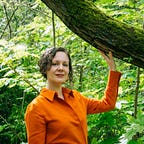The Policy Slogan “Build Back Better” Has an Interesting Backstory
The phrase #buildbackbetter is everywhere right now. Joe Biden is using it to describe his proposed stimulus package. A variation on it, #rebuildbetter, has been used by the US solar industry in a joint letter to congress asking for an extension of the Solar Tax Credit. And, of course, it’s being used by governments abroad, too. The UK, New Zealand’s Prime Minister Jacinda Ardern, and the OECD have used the phrase in reference to green recovery plans.
But where did the phrase “build back better” come from? And did it always refer to “green” recovery?
Sendai Framework
It turns out that Build Back Better (BBB) is not just a political slogan, it refers to the official Sendai Framework of disaster recovery that was adopted in the UN World Conference on Disaster Risk Reduction in Sendai, Japan in 2015.
The disaster mitigating components of the Sendai Framework include: “(i) understanding disaster risk; (ii) strengthening disaster risk governance to manage disaster risk; (iii) investing in disaster reduction for resilience and; (iv) enhancing disaster preparedness for effective response, and to “Build Back Better” in recovery, rehabilitation, and reconstruction.”
Its definition is broad enough to cover any disaster scenario. And it doesn’t necessarily imply transitioning to a low carbon economy. Nevertheless, that’s how world leaders currently use the phrase today.
Build back better step-by-step
The World Bank also uses the phrase in its Unbreakable report, which details the devastation disasters have on poor communities. It highlights the need to “build back better” after meeting essential needs in poor communities. The report proposes a metric of well-being to think beyond asset losses to understand how disasters impact the poor. For the World Bank, the path to “resilient recovery” follows these steps: (1) humanitarian relief, (2) restoration of basic services, (3) reconstruction and asset recovery, and (4) building back better, to improve existing systems.
Build back faster and stronger
Unbreakable emphasizes the need to build back faster and stronger, which are not always compatible with green recovery plans. In fact, investment in a low carbon economy takes years and the economic and employment benefits aren’t immediate. This makes me wonder if using BBB to champion a low carbon economy is somewhat misleading. BBB gives the public the sense that a greener economy can solve underemployment urgently, when in fact, the benefits take a few years.
Obama’s green stimulus demonstrated this because the green jobs it promised grew incrementally over the next ten years. It was the largest green stimulus ever prior to COVID-19, so policymakers now have a lot to learn from it. Unlike BBB, however, it was an economic recovery plan, rather than a disaster recovery plan. It succeeded in lowering nationwide carbon emissions but did not necessarily succeed in providing the 500,000 green jobs Obama promised. This is partly because it’s debatable what comprises a “green job.” By 2016, however, the number of jobs in the solar industry doubled thanks to the solar Investment Tax Credit (ITC).
Disaster relief or economic stimulus?
I bring this up because many of the green recovery plans invoking the phrase BBB resemble Obama’s economic stimulus more than a disaster response to the pandemic. The pandemic has obviously impacted the entire globe and the impacts of its concurrent crises of climate change and biodiversity loss pose a long-term dilemma. Before the pandemic, the phrase BBB typically referred to natural disaster recoveries that responded to natural disasters that were sudden, temporary, and geographically isolated events.
A Wikipedia article on the topic notes how BBB or related concepts were invoked in the following relief efforts:
- Reconstruction of the 1995 Great Hanshin-Awaji Earthquake (its recovery was called the Phoenix Plan)
- Recovery from the 2004 Indian Ocean Tsunami (used in the UN Special Envoy Report)
- Recovery from storms and political upheaval in Haiti in 2008 (used by Pres. Bill Clinton)
- Recovery from 2010 earthquake in Haiti (used by UN Sec. Gen. Ban Ki-Moon)
Key concepts in its first use (2004) include self-determined recovery, equity, future preparedness, local level recovery funds, good planning, and high-quality information, establishing clear roles and responsibilities among organizations granting relief, welcoming entrepreneurship, avoiding competition among beneficiaries, and leaving communities safer through risk reduction and improved resilience.
Broadening the scope of Build Back Better
For today’s post-COVID-19 relief, the OECD encourages governments to use BBB to respond to today’s global environmental threats like climate change and biodiversity loss as they get back on their feet through recovery packages. It warns of greater social and economic damage due to neglecting those issues. It suggests governments include goals to align with science-based carbon emissions reduction targets, improvements to circular supply chains, and investment in decentralized, renewable electricity systems. It also emphasizes well-being, inclusiveness, and accessibility.
By invoking the phrase BBB to include green recovery and COVID-19 recovery under the same umbrella, governments are starting to view today’s concurrent crises as a part of a unified problem. Recognizing that we are facing a series of long-term mounting risks helps us see that recovery from temporary shocks is not enough.
Where to compare green recovery plans
If you want to explore further how the green recovery plans of different countries compare with one another, Carbon Brief put together this super handy spreadsheet on the ways governments are planning to reduce GHG emissions in their relief efforts. Hopefully, it shows that we’re on a path towards taking long-term risks seriously.
Thanks for reading! Read more of my work on Medium:
